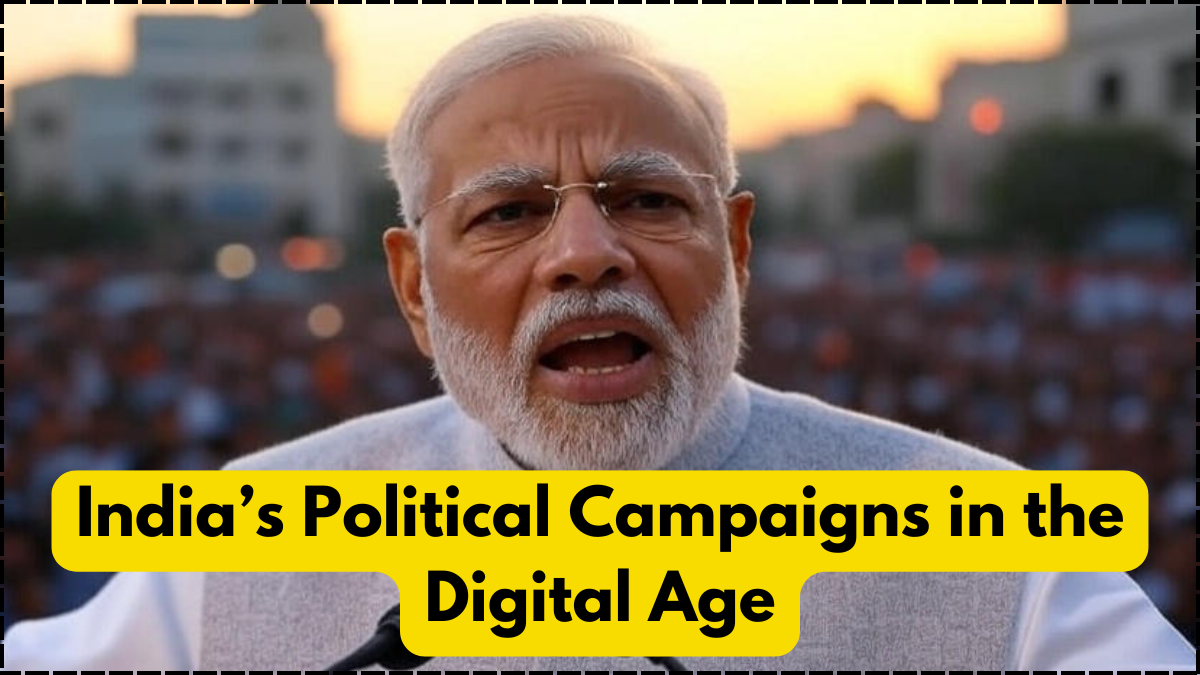In recent years, political campaigns India has taken a dramatic turn with the rise of digital platforms. Traditional rallies, posters, and television ads are no longer the sole drivers of voter outreach. Today, social media politics shapes opinions, sparks debates, and influences millions of citizens instantly. With smartphone penetration and affordable internet access, India has become one of the largest digital battlegrounds for political parties. This transformation has not only changed how campaigns are run but also how voters connect with leaders.

The Shift from Traditional to Digital Campaigning
Earlier, political campaigns India relied heavily on physical rallies, speeches, and mass gatherings. While these methods still exist, they are now complemented by technology-driven strategies. Social media politics allows parties to engage with voters directly, bypassing traditional media gatekeepers. Facebook, Instagram, X (Twitter), and WhatsApp are used to share manifestos, videos, and real-time updates. This shift has also lowered campaign costs while increasing outreach, especially in urban and semi-urban regions.
Key features of digital campaigning include:
- Targeted advertising based on demographics
- Live streaming of speeches and events
- Rapid circulation of campaign slogans and videos
- Personalized interaction through chatbots and apps
Impact of Social Media Politics on Voter Behavior
The role of social media politics in shaping public perception cannot be ignored. Political parties use digital data analytics to understand voter behavior and design issue-specific campaigns. For instance, young voters often respond more to memes and video content than traditional speeches. Meanwhile, regional issues trend quickly online, forcing candidates to react promptly.
A notable factor is that political campaigns India now create two-way communication. Instead of just broadcasting messages, politicians receive instant feedback from citizens. This real-time engagement strengthens the bond between leaders and voters, but it also opens the door to challenges such as misinformation and fake news.
Comparative Table of Campaign Strategies
| Campaign Method | Traditional Approach | Digital Approach (Social Media Politics) |
|---|---|---|
| Outreach | Rallies, posters, door-to-door | Facebook ads, WhatsApp groups, live videos |
| Cost | High (printing, transport, manpower) | Lower (online ads, targeted campaigns) |
| Voter Engagement | One-way speeches | Two-way interaction and instant feedback |
| Speed of Communication | Slower, dependent on logistics | Immediate, viral sharing |
| Audience Targeting | General, mass-focused | Specific demographics, age groups, regions |
This table highlights how the adoption of social media politics has modernized political campaigns India, making them more cost-efficient and faster.
Challenges in the Digital Political Space
While digital platforms offer enormous opportunities, they also present serious challenges. Fake news, propaganda, and manipulated data spread quickly, sometimes influencing voter decisions unfairly. Misuse of personal data and privacy concerns add another layer of complexity. Furthermore, not all citizens have equal digital literacy, meaning rural voters might still be more influenced by traditional campaigning.
Despite these challenges, social media politics continues to grow as the primary battlefield for elections. Political campaigns India now invest heavily in digital teams, influencer partnerships, and even meme strategies to remain relevant among younger audiences.
Conclusion
The evolution of political campaigns India into a digitally dominated arena marks a new chapter in democracy. Social media politics has enabled faster communication, direct engagement, and wider reach, but it has also raised ethical and regulatory questions. Moving forward, a balance between digital and traditional methods is essential to ensure fair elections and informed voter choices. The success of future campaigns will depend not just on technology but also on transparency, accountability, and responsible use of digital power.
FAQs
How has social media changed political campaigns India?
Social media has made campaigns faster, more interactive, and cheaper, enabling leaders to directly connect with voters.
Why is social media politics important in India?
It shapes voter opinions, spreads campaign messages instantly, and plays a crucial role in influencing election outcomes.
What are the challenges of political campaigns India in the digital age?
The biggest challenges include fake news, misuse of data, privacy concerns, and unequal access to digital platforms.
Do traditional methods still matter in political campaigns India?
Yes, especially in rural areas where face-to-face engagement and community rallies still play an important role.
Click here to learn more